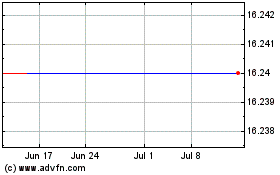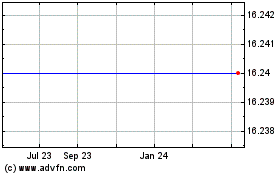Extension study demonstrates favorable results
in long term treatment of overactive bladder with vibegron,
including improvements in incontinence efficacy, quality of life
endpoints and with good tolerability
Long term EMPOWUR extension study data featured
in an oral presentation at the virtual International Continence
Society (ICS) Annual Meeting
Meta-analysis on increased risk of incident
dementia following use of anticholinergics will also be presented
at ICS
Urovant Sciences (Nasdaq: UROV) today announced positive
efficacy and safety data from the vibegron EMPOWUR long term
extension study with patient data over a total exposure of 52
weeks. The data demonstrate that vibegron improved quality of life
(QoL) and incontinence efficacy endpoints with good long term
tolerability in adult patients with overactive bladder (OAB) and
symptoms of urge urinary incontinence (UUI), urgency and urinary
frequency.
Vibegron is a once-daily, beta-3 adrenergic agonist under
investigation for the treatment of OAB by the U.S. Food and Drug
Administration (FDA). In March 2020, the FDA accepted the New Drug
Application (NDA) for vibegron in OAB and assigned a Prescription
Drug User Fee Act (PDUFA) goal date of December 26, 2020.
In an oral presentation at the virtual International Continence
Society (ICS) Annual Meeting, David Staskin, MD, presented results
from the 40-week EMPOWUR extension to the 12-week EMPOWUR trial
that show 75 mg of vibegron was well tolerated over the total
exposure of 52 weeks and demonstrated numerically greater
improvements from baseline compared with tolterodine across QoL and
responder efficacy endpoints. These results are consistent with the
results from the placebo-controlled EMPOWUR phase 3 study, with
comparable safety and durable efficacy.
“A large segment of the OAB population suffers in silence
because they are embarrassed, afraid, or unaware that there are
treatments, including medications, that could address their
problems with bladder control. This situation leads to OAB being
overlooked and undertreated, and highlights the need for
therapeutic options to improve quality of life,” said Dr. Staskin,
principal investigator of the EMPOWUR study, leading urologist with
St. Elizabeth’s Medical Center, and Associate Professor of Urology
at Tufts University School of Medicine, Boston. “The EMPOWUR
40-week extension study demonstrated how vibegron, if approved by
the FDA, has the potential to offer a lasting solution for adult
patients with OAB to manage urinary frequency and urinary
incontinence associated with the urgent need to go to the
bathroom.”
At week 52, 61 percent of 143 vibegron-treated patients had a
≥75 percent reduction and 40.8 percent showed a 100 percent
reduction in UUI (urge urinary incontinence), a key symptom for OAB
patients. In addition, 71.1 percent had ≥50 percent reduction in
total incontinence episodes from baseline to week 52. In this same
time period, vibegron demonstrated numerically greater improvements
from baseline versus tolterodine for all QoL subscale scores as
measured by the Overactive Bladder Questionnaire Long Form
(OAB-qLF), including coping, concern, sleep, social interaction,
health-related QoL and symptom bother. Vibegron 75 mg once daily
demonstrated a 40-week safety profile comparable to that of 12-week
EMPOWUR study, as well as durable efficacy for QoL and incontinence
efficacy endpoints. Adverse events (AEs) occurred in 62.6%
(171/273) of vibegron and 54.3% (126/232) of tolterodine patients;
4 (1.5%) vibegron and 8 (3.4%) tolterodine patients discontinued
study medication due to an AE.
Examining the Risk of Cognitive Effects Associated with
Anticholinergic Agents
On November 20, there will be a presentation of findings from a
recent meta-analysis of anticholinergic use by Dr. Roger
Dmochowski, which was supported by Urovant. The systemic literature
review and meta-analysis revealed that use of anticholinergic
agents for three months or longer increased the risk of incident
dementia by an average of 46 percent relative to non-use. This
increased risk also was reported in the six studies included in the
meta-analysis that evaluated anticholinergic medications used to
treat overactive bladder.
Anticholinergic medications are currently the most frequently
prescribed pharmaceutical treatment for OAB. They exert their
effects by blocking the action of the neurotransmitter
acetylcholine and are prescribed to treat a wide range of medical
conditions.
“The findings from our systematic literature review and
meta-analysis shine a light on what data and anecdotal evidence has
demonstrated for many practicing physicians: ongoing use of
anticholinergics to treat OAB comes with an increased risk,” said
Dr. Dmochowski, associate surgeon in chief and Professor of
Urologic Surgery at Vanderbilt University Medical Center. “These
findings underscore the need for medicines that can treat
conditions such as OAB without the potential cognitive risks
associated with anticholinergic agents. It is essential that health
care providers work with their patients to determine an appropriate
treatment plan.”
About Urovant Sciences
Urovant Sciences is a clinical-stage biopharmaceutical company
focused on developing and commercializing innovative therapies for
urologic conditions. The Company’s lead product candidate,
vibegron, is an oral, once-daily small molecule beta-3 agonist that
is being evaluated for overactive bladder (OAB). Urovant Sciences
reported positive data from the vibegron 12-week, phase 3 pivotal
EMPOWUR study and demonstrated favorable longer-term efficacy,
safety, and tolerability in a 40-week extension study. The Company
submitted a New Drug Application to the FDA seeking approval of
vibegron for the treatment of patients with OAB in December 2019.
Vibegron is also being evaluated for treatment of OAB in men with
benign prostatic hyperplasia (OAB+BPH) and for abdominal pain
associated with irritable bowel syndrome (IBS). Urovant’s second
product candidate, URO-902, is a novel gene therapy being developed
for patients with OAB who have failed oral pharmacologic therapy.
Urovant Sciences, a subsidiary of Sumitomo Dainippon Pharma Co.,
Ltd., intends to develop novel treatments for additional urologic
diseases. Learn more about us at www.urovant.com.
About Sumitovant Biopharma Ltd.
Sumitovant is a global biopharmaceutical company with offices in
New York City and London. Sumitovant is a wholly owned subsidiary
of Sumitomo Dainippon Pharma. Sumitovant is the majority
shareholder of Myovant Sciences and Urovant Sciences, and wholly
owns Enzyvant Therapeutics, Spirovant Sciences, and Altavant
Sciences. Sumitovant's promising pipeline is comprised of
early-through late-stage investigational medicines across a range
of disease areas targeting high unmet need. For further information
about Sumitovant, please visit https://www.sumitovant.com.
About Sumitomo Dainippon Pharma Co., Ltd.
Sumitomo Dainippon Pharma is among the top-ten listed
pharmaceutical companies in Japan, operating globally in major
pharmaceutical markets, including Japan, the U.S., China, and the
European Union. Sumitomo Dainippon Pharma is based on the 2005
merger between Dainippon Pharmaceutical Co., Ltd., and Sumitomo
Pharmaceuticals Co., Ltd. Today, Sumitomo Dainippon Pharma has more
than 6,000 employees worldwide. Additional information about
Sumitomo Dainippon Pharma is available through its corporate
website at https://www.ds-pharma.com.
Forward-Looking Statements
This press release contains forward-looking statements within
the meaning of the Private Securities Litigation Reform Act of
1995. Forward-looking statements include all statements that are
not historical statements of fact and statements regarding the
Company’s intent, belief or expectations and can be identified by
words such as “anticipate,” “believe,” “can,” “continue,” “could,”
“estimate,” “expect,” “intend,” “likely,” “may,” “might,”
“objective,” “ongoing,” “plan,” “potential,” “predict,” “project,”
“should,” “strive,” “to be,” “will,” “would,” or the negative or
plural of these words or other similar expressions or variations,
although not all forward-looking statements contain these
identifying words. In this press release, forward-looking
statements include, but are not limited to, statements regarding
Urovant’s plans to advance the clinical development of vibegron in
patients with OAB, including related to the status of potential FDA
approval. Forward-looking statements are subject to risks and
uncertainties that could cause actual results to differ materially
and reported results should not be considered as an indication of
future performance. These risks and uncertainties include, but are
not limited to, risks associated with: the success, cost, and
timing of Urovant’s development activities, including the timing of
the initiation and completion of clinical trials and the timing of
expected regulatory filings; the FDA’s potential approval of
vibegron and the associated package insert; the clinical utility
and potential attributes and benefits of vibegron, including
reliance on collaboration partners and the ability to procure
additional sources of financing; our intellectual property
position, including the ability to identify and in-license or
acquire third-party patents and licenses, and associated costs; and
other risks and uncertainties listed in the Company’s filings with
the United States Securities and Exchange Commission (SEC),
including under the heading “Risk Factors” in the Company’s most
recently filed Annual Report on Form 10-K and any subsequent
Quarterly Reports on Form 10-Q filed with the SEC, as such risk
factors may be amended, supplemented or superseded from time to
time by other filings with the SEC. Given these risks and
uncertainties, you should not place undue reliance on any
forward-looking statements. These forward-looking statements are
based on information available to Urovant as of the date of this
press release and speak only as of the date of this release.
Urovant disclaims any obligation to update these forward-looking
statements, except as may be required by law.
View source
version on businesswire.com: https://www.businesswire.com/news/home/20201119005443/en/
Investor and Media Inquiries: Ryan Kubota 949.769.2706
ryan.kubota@urovant.com
Urovant Sciences (NASDAQ:UROV)
Historical Stock Chart
From Mar 2024 to Apr 2024

Urovant Sciences (NASDAQ:UROV)
Historical Stock Chart
From Apr 2023 to Apr 2024
